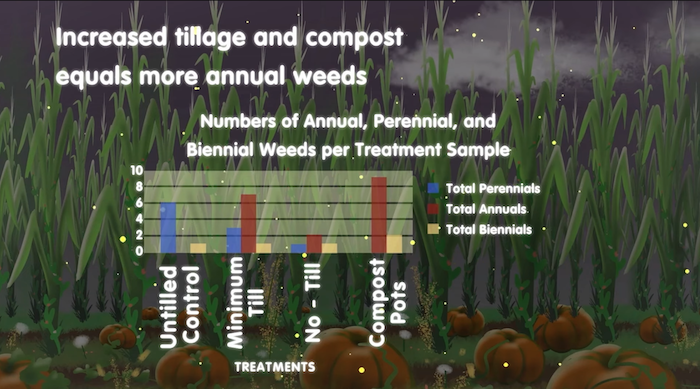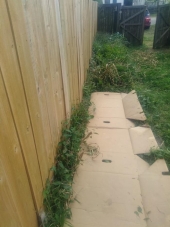
 6
6




Candace Williams wrote:But the statement, "what would Sepp Holzer do?"
Invasive plants are Earth's way of insisting we notice her medicines. Stephen Herrod Buhner
Everyone learns what works by learning what doesn't work. Stephen Herrod Buhner
 7
7




Earthworks are the skeleton; the plants and animals flesh out the design.
 7
7




 5
5




A human being should be able to change a diaper, plan an invasion, butcher a hog, conn a ship, design a building, write a sonnet, balance accounts, build a wall, set a bone, comfort the dying, take orders, give orders, cooperate, act alone, solve equations, analyze a new problem, pitch manure, program a computer, cook a tasty meal, fight efficiently, die gallantly. Specialization is for insects.
-Robert A. Heinlein

 3
3




Christopher Shimanski wrote:Don't overlook a late planting of winter rye as a smother crop. You may get a crop going if you broadcast rye onto the soil and then mow it really tight about 2 weeks before your first frost. That rye should germinate and continue to grow until the temps stay below 32. In the spring, that rye will come on so fast, it'll choke out most of your nitrogen using warm season weeds. Once you see a seed head, you can mow it off and plant into it.
How Permies works: https://permies.com/wiki/34193/permies-works-links-threads
My projects on Skye: The tree field, Growing and landracing, perennial polycultures, "Don't dream it - be it! "
 3
3




Moderator, Treatment Free Beekeepers group on Facebook.
https://www.facebook.com/groups/treatmentfreebeekeepers/





 2
2




gardener, homesteader
 2
2




Visit Redhawk's soil series: https://permies.com/wiki/redhawk-soil
How permies.com works: https://permies.com/wiki/34193/permies-works-links-threads
 2
2




gardener, homesteader




gardener, homesteader
 2
2




Gaurī, double posts happens to all of us occasionally. Please just hit the "Report!" button and say "double post" and a helpful staff member will come along a disappear the duplicate. (Please report spam or other nasty things if you happen to see them, as we deal with those issues also.)Gaurī Rasp wrote:Ooops sorry for the double post.
And any good resources for identifying NC weeds? Which are edible? I’ve searched online but didn’t find what I needed
Visit Redhawk's soil series: https://permies.com/wiki/redhawk-soil
How permies.com works: https://permies.com/wiki/34193/permies-works-links-threads
 1
1




gardener, homesteader
 2
2




Build your own wild game paradise: https://hunterseden.blogspot.com/















Gaurī Rasp wrote:
Currently I’m collecting, husking, cleaning & curing the abundant black walnuts on our land. I watched tons of videos to get the easiest methods but is this a labor of love! ♥️
Earthworks are the skeleton; the plants and animals flesh out the design.
 2
2




gardener, homesteader
 2
2




gardener, homesteader















Gaurī Rasp wrote:Myron, thank you re: the info on using black walnut hulls in the garden. I threw most of them around the edge of the garden which gets built up w all the weeds I pull & it all composts down.
Now I’m on to cracking the walnuts…the first one I tried wouldn’t even open w a small sledge hammer! Yikes! Another foraging labor of love!
Earthworks are the skeleton; the plants and animals flesh out the design.




Stacy Witscher wrote:I also use different strategies for different weeds. I reserve black tarping for things like bindweed that at least for me have been resistant to other methods. And even then I work on a small area at a time. Most areas I prefer cardboard and mulch.
 2
2





Explore the Permies Digital Market - ebooks, movies, building plans, courses, and more. Oh my!


 1
1




 2
2








Invasive plants are Earth's way of insisting we notice her medicines. Stephen Herrod Buhner
Everyone learns what works by learning what doesn't work. Stephen Herrod Buhner

|
She's out of the country right now, toppling an unauthorized dictatorship. Please leave a message with this tiny ad:
The new permaculture playing cards kickstarter is now live!
https://www.kickstarter.com/projects/paulwheaton/garden-cards
|








